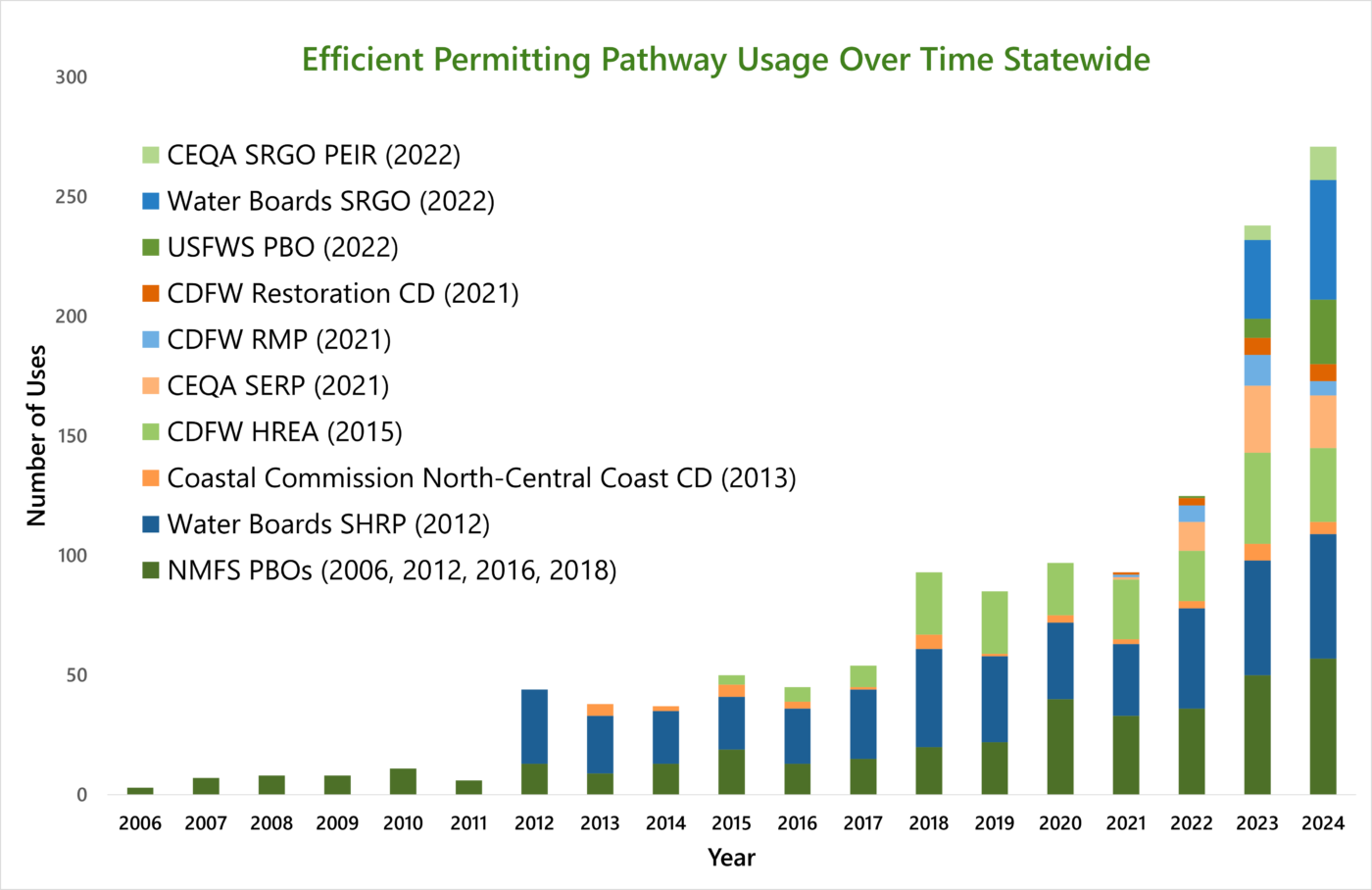Benefits of Using Accelerated Permitting Pathways
Accelerated permitting pathways are programmatic permits and other tools designed to provide a way to coordinate permitting across a set of project types so that the permitting process can be simplified, more efficient, and save costs for project proponents, consultants, and agency staff, while still providing robust environmental protections.
Programmatic permits are a type of accelerated permitting pathway that is written in advance to cover a wide variety of the most commonly done and highest-priority projects.
The types of projects that qualify and the essential environmental protections related to potential construction impacts are all listed up front. There aren’t shortcuts for environmental protection, but instead, thoughtful planning is done in advance to simplify permitting for projects that typically have very similar requirements. Projects get done faster and save time and resources for both agency staff and applicants, with more money for on-the-ground work.
They also serve as great planning tools because they model the creation of well-designed projects with a focus on impact avoidance. Agency staff ground-truth the projects to see if they qualify for the permits and can help provide technical assistance to applicants to help them improve the quality of projects.
California has ambitious plans to restore a lot of our lands and waterways, and these accelerated permitting pathways help get more beneficial projects done faster while keeping available funding focused on getting projects built.

The end result is faster project implementation, more money for on-the-ground work, and increased regulatory certainty for applicants. The NOAA Restoration Center did cost-savings calculations for their programmatic biological opinions (PBOs) and has estimated that they have saved between $9.5-$24.3 million (in 2015 dollars) in staff time and consultant fees for NMFS, USACE, and project proponents combined (Pagliuco, personal communication, 2025). And with a more efficient process for project proponents, funding agencies can allocate more grant dollars for on-the-ground work, making the most of taxpayers’ money.

